The first thing that I have my clients do in the 4 Weeks to Wellness Program is a full pantry purge.
Well, rather, I have them do a full shop keeping of what’s actually in there. This is great for New Year cleaning, but more importantly, it’s an exercise in ingredient list awareness. You look at the back of each and every item and take stock of how much hidden sugar—and how many different types of sugar—is packed into one plastic package. Then it’s up to you how soon you want to find a replacement.
The experience was extremely eye-opening to my first set of clients, as it was for me during my first vice detox nearly three years ago. It depressed me how many of my favorite items were off limits for my month-long added sugar embargo. But more so, I was freaked out by how much mindless sugar I’d been eating every day in my theatrically “healthy” diet.
Therein lies the rub folks. Between what we think we’re eating and what is actually in it.
80 percent of packaged foods have added sugar. And if you’re the type of person who drinks matcha lattes for breakfast and uses coconut oil in your scrambled eggs, you might think that this statistic doesn’t apply to you. But I put together this hidden sugar memo to remind you that shopping at Whole Foods does not make you exempt. Far from it.
When it comes to the ingredients in your food, awareness is so important. With sugar, though, this awareness can shed a greater light on the source of your cravings.
The problem with hidden sugar in our everyday meals—and I’m talking about the savory places listed below where you wouldn’t think to find it—is that our addiction to the white stuff is chemical. The more sugar we eat, the more we crave an encore. And even if you abstain from the sweet side of the breakfast menu, having ketchup with your home fries or maple-smoked bacon with your eggs, or even a side of toast, means you could be unconsciously cueing your body to migrate towards the dessert table later in the day. The eggs and the home fries are probably the only thing on that plate without added sugar.
As I discovered during my wellness project, it’s so important to set yourself up for success at home in order to find more freedom out in the world. And especially this time of year, with so many hopeful resolutions on the books, I want to make sure that you’re not undoing your willpower without even knowing it.
So please do me a favor and open up your cabinets. Scan the ingredient lists to see if one of the 80 names for sugar is on there. Then look at the nutrition guidelines and see how many grams of sugar per serving exists. Anything over 5g should get a second look.
As part of the course, I put together a whole worksheet for exploring the hidden sugar in your pantry. Some are obvious: cereal, breakfast bars, instant oatmeal – the sweet stuff. But there are also many deceptive savory places most people don’t think to look.
The following offenders might not be as obvious as a stack of Oreos. Read on for hidden sugar hide outs–from your cabinets to your fridge–and what brands I look to for low-sugar options.
From one healthy hedonist, to another,
Xoxo
Phoebe
IN THE CABINETS
Sandwich Bread
Believe it or not, most sandwich bread has added sugar. Even when making homemade gluten-free peasant bread, it’s an ingredient. To find options without sugar, your best bet is a sourdough bread from the farmer’s market which is fermented with a live active culture. As you know from my kombucha travails, probiotic bacteria eats sugar (and gluten, making sourdough bread a better option for those sensitive). If you’re not GF, Ezekiel Sprouted Wheat Bread and Manna Organics Sunseed Bread are sugar-free. If you are GF, Katz Sugar-Free Gluten-Free Rolls and B-Free Quinoa and Chia Seeds Wraps are a good option. Unfortunately, most gluten-free breads (more so than regular bread) have added sugar in the form of honey or cane sugar.
Beef Jerky
Most packaged snack food uses sugar and salt to create an irresistible, addictive flavor profile. Jerky, a long-time favorite of the Paleo movement, is usually no different. You’ll see evaporated cane sugar, pineapple juice or honey in the ingredient list, even though brands tout that there’s no added sugar (I still count honey as added sugar). Try to choose unflavored options (like salt and pepper or original) to avoid this. But sadly many of my favorite brands are violators of the added sugar rule even with their “unflavored” lines (Vermont Smoke and Cure, Epic, The New Primal, Krave). One of the only brands I’ve found with no sugar is People’s Choice Old Fashioned Original.
Dried Cranberries or Cherries
If you read the ingredient labels on your favorite dried fruit, you’ll find that many are enhanced with apple or grape juice concentrate or cane sugar. Though again, fruit concentrates are technically paleo and under the umbrella of “no added sugar” they add a ton of sugar to your bottom line, usually to the tune of 20 grams per serving. Sadly, I haven’t found any brands that produce dried cranberries without added sugar. So you’re better off taking these deceptively sweet “healthy” snacks out of your rotation.
Protein and Nutritional Powders
Especially protein powders made from grass-fed beef usually have a high degree of sweeteners to mask the taste and create a sweet base for smoothies that don’t need much more than water. A few brands that offer sugar-free plant protein options are Nutiva (I like their Hemp protein) and OWYN, which uses monk fruit to create sweetness without the sugar content and is completely allergy friendly. They also make shelf stable shakes that are a great way to get your greens and protein in. I’m also a big fan of Great Lakes and Vital Proteins for collagen peptide powders.
Pasta Sauce
Why brands feel the need to add sugar to naturally sweet and delicious tomato sauce is beyond me. Rao’s delicious marinara sauce is just a handful of ingredients. Their arrabiata is top notch if you like fire!
Teriyaki Sauce and Marinades
Instead of complex flavored marinades and teriyaki sauce, try coconut aminos or plain jane gluten-free tamari with some fresh lemon juice and sesame oil.
IN THE FRIDGE
Nut Butters
Flavored nut butters are a big red flag, as are traditional brands like Skippy and JIF, which usually have added sugar. Justin’s classic almond butter is a fabulous option, as is
Mayonnaise
Another condiment that you would never think needs added sugar, mayo brands usually sneak in a small amount of honey or cane sugar, even my favorite Spectrum Organic Canola Oil and beloved Sir Kensington’s Special Sauce. Primal Kitchen avocado mayo is one exception, as is Whole Foods 365 brand.
Balsamic Vinegar
Like dried fruit, balsamic vinegar tends to get its syrupy quality from grape juice concentrate. Better phase this vinegar out of rotation and replace it with naturally sweet apple cider vinegar or rice vinegar. Better yet, just use fresh lemon juice in your dressings. Speaking of which…
Salad Dressing
Beware the store bought dressing for gluten and unwanted stabilizers, but also the sugar. Primal Kitchen makes wonderful sugar-free dressings with avocado oil as the base and primarily organic ingredients. I love their Green Goddess when I’m too busy to make my own.
Non-Dairy Milks
Unless it specifies unsweetened, most non-dairy nut milks contain added sugar. If you like flavors like vanilla, you can still enjoy these in the unsweetened variety. Pacific Foods makes great choices. Also note that the sugar count is still relatively high, but it’s naturally occurring. Buying full-fat dairy products will offset your blood sugar spikes.
Hot Sauces
Many people are surprised that some hot sauces, including sriracha, contain sugar. Stick with authentic hot pepper pastes like Moroccan harissa or Thai red curry paste.
Processed Meats
Like jerky, processed breakfast sausage and maple-smoked bacon often has added sugar in the form of honey, molasses, maple syrup or plain old table sugar, like my favorite Neiman Ranch. Choose bacon and sausage that has as few ingredients on the package as possible. Sometimes bacon makers use sugar in the curing process and very little ends up in the final product. Pay attention to the grams as well. Applegate is an example of that for both bacon and classic pork breakfast sausage. Other bacon possibilities are Grassland Bacon and Pederson Farms. For sausage, it’s easy enough to make your own bulk patties! Otherwise, try hot or sweet Italian links straight from the butcher counter.
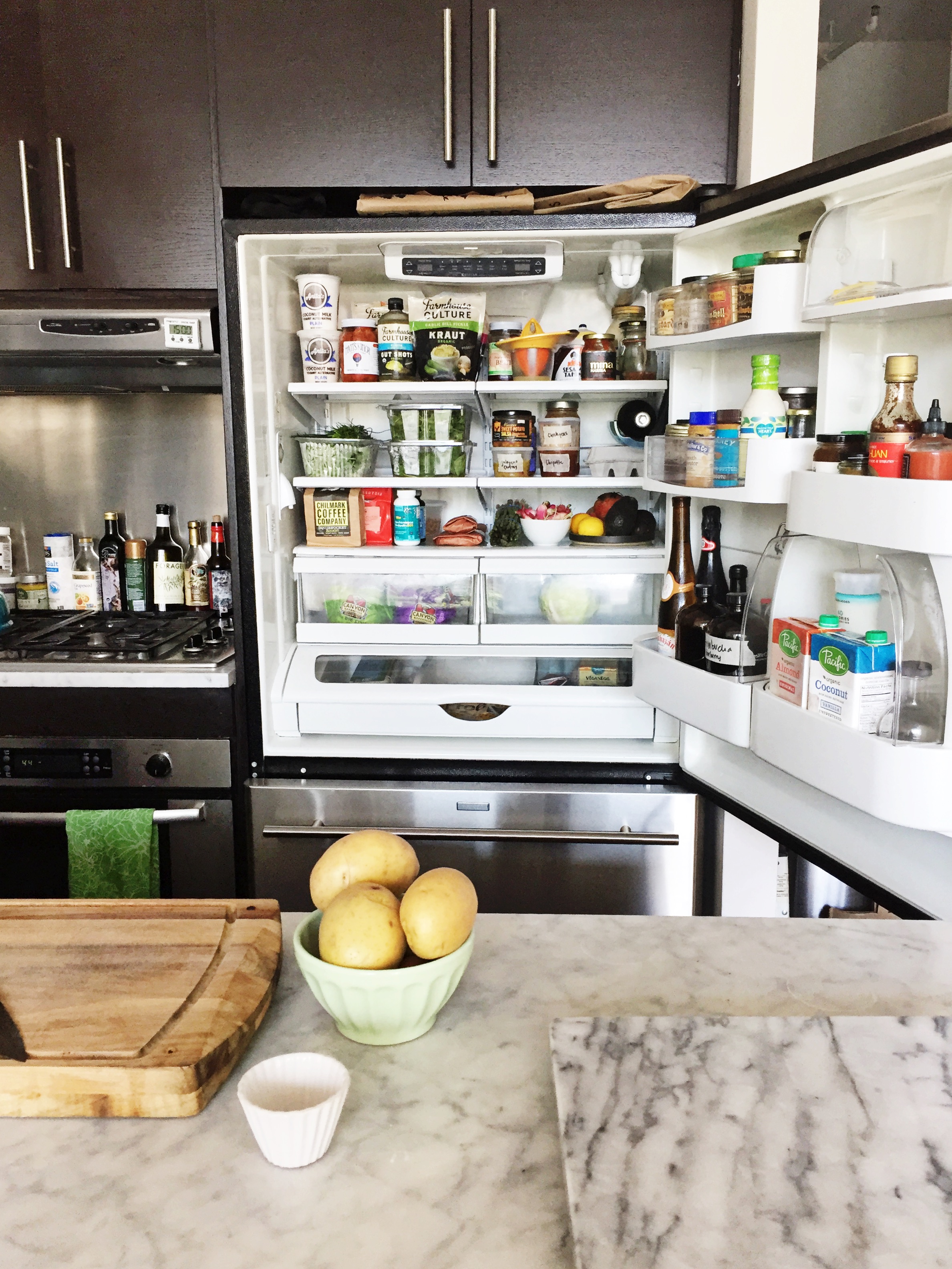
While I don’t expect you to give up your favorite snacks and condiments all together, the more of these items you can convert to better options means the less you’ll crave more heavy hitter sweets. And the more room there will be to embrace a few cookies when the occasion actually feels special.
As you can see by the above pictures, my fridge is still a work in process. But the things I choose to knowingly keep, I do so because they’re 100 percent WORTH IT.
If you need some help and support getting unhooked from the grip of sugar, there ares still a few spots left in the 4 Weeks to Wellness program, which starts Jan 8th! I’m also offering a special 2-for-1 buddy deal this week only! Check it out and get more info here.
Were there any items in your pantry with added that you were surprised by? Tell me in the comments!
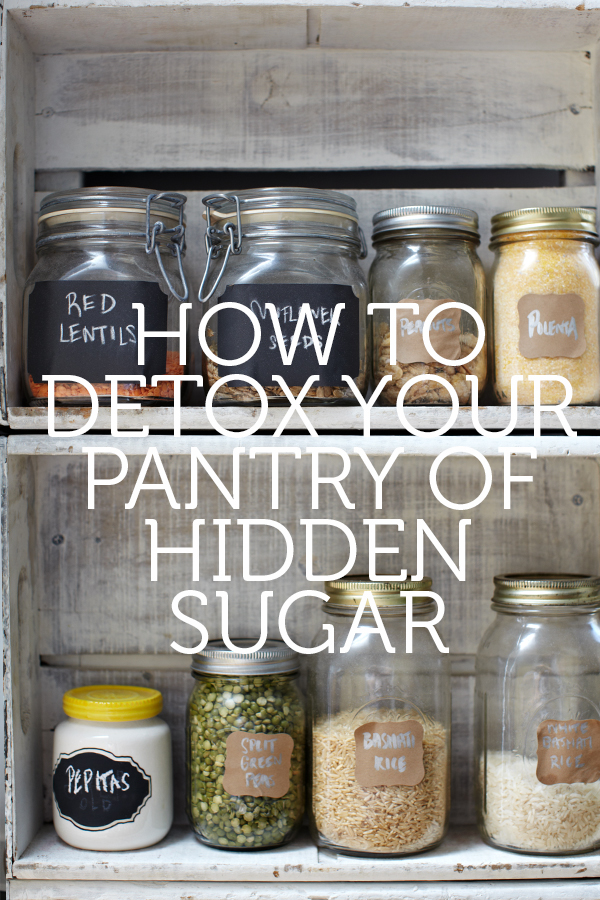

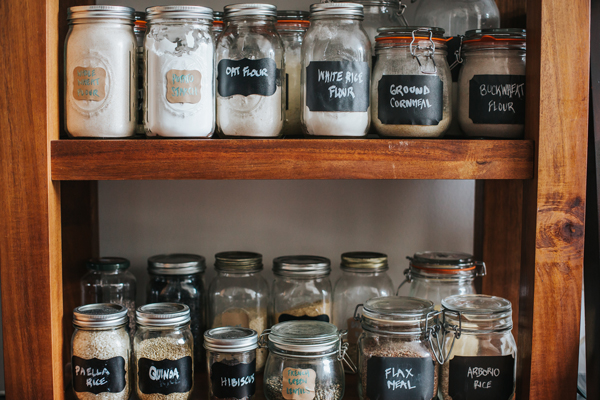
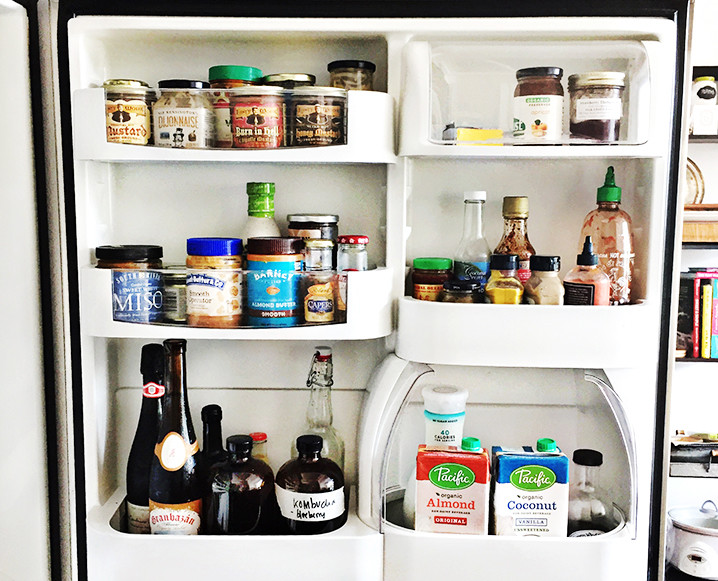
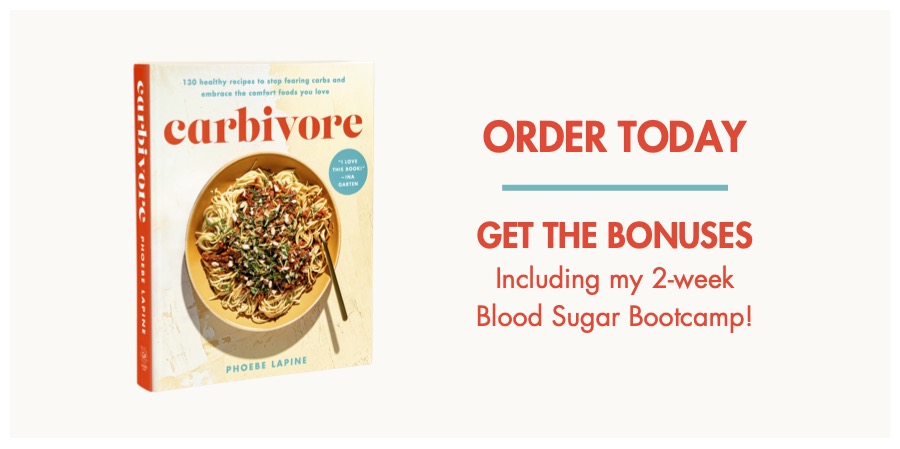
I’m always trying to purge excess sugar from my life. I was recently surprised by the hidden sugar in canned vegetables and beans that can live in the water they are being preserved in!
yes – i learned in my canning class earlier this year that sugar is essential for maintaining the PH in the preserving process. Always a trade off in healthy eating, sigh.